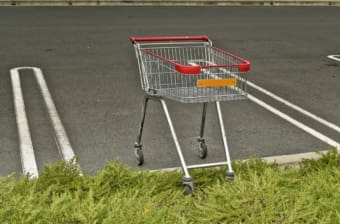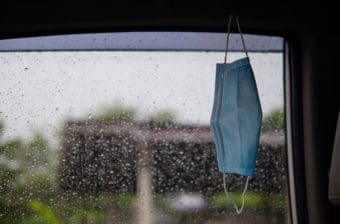It may be difficult for many Americans to appreciate the depth of the COVID-19 economic disruption early on, as the rapid crash will outpace traditional statistics. But, even at the outset of the COVID-19 crisis, it is already clear that when economic historians parse through the economic data in the years ahead, they will label March 2020 the beginning of a recession, marking the end of an economic expansion that began over a decade ago.
While there are always problems in any economy, there was nothing fundamentally wrong in the economy that triggered this recession—no asset bubble popping or runaway inflation to be stopped. The shock is from outside the economy, and if the health shock can be controlled, good policy may be able to steer to a quick return. Policymakers have already stepped up, but they will need to do more to prevent this recession from causing even more damage.
Americans should prepare for economic data releases that send mixed messages about the state of the U.S. economy. The employment report released on April 3rd shows an unemployment rate of 4.4 percent (an increase of nearly a percentage point), and 700,000 jobs lost in the month. While it is a downbeat reading of the labor market, it understates the situation dramatically. This report describes the labor market based on the reference week ending March 14th, before the bulk of the social distancing policies were in place and when new unemployment insurance (UI) claims were just 280,000. The next GDP report on April 29th will be for the first quarter, when at least 10 of the 13 weeks were largely normal.
Yet the scale of jobs lost and economic activity paused have already made clear that we are facing a shocking economic downturn. The cessation of economic activity due to the public health response to the COVID-19 pandemic has brought on the most rapid economic breakdown in U.S. history. In the week ending March 21st, there were over 3 million new UI claims filed, more than four times the weekly record. It took five weeks at the height of the Great Recession to add a comparable number to the unemployment rolls. In the week ending March 28th, over 6 million new claims were filed, 10 times as many as in the worst week prior to this year.
Forecasters have suggested U.S. economic output will contract at an annualized rate of 20–30 percent in the second quarter of 2020—a reduction in activity three times worse than the worst quarter of 2008—and international bodies are now forecasting a global recession this year.
What is not yet clear is how long the recession will last or the scale of the eventual economic harm. Policymakers will not be able to stop a downturn. The crucial challenge will be to minimize the damage and to make sure the economy is ready to recover when health precautions allow a resumption in activity.
Policy actions thus far
Unlike in the Great Depression, the Federal Reserve has responded aggressively—keeping financial markets functioning and avoiding sharp reductions in liquidity or credit. Furthermore, the financial system has better buffers and resiliency than at the start of the Great Recession following the reforms passed over the last decade, including the Dodd-Frank financial reform. In addition, Congress has shown considerable urgency, passing three packages that total well over 2 trillion dollars to fund the health system, support households, and provide loans and grants to firms to keep them alive during the slump.
What else policymakers need to do
While a great deal of policy activity has already been launched, the scale of the human and economic damage makes clear that policymakers must continue to work. The shocking numbers of newly unemployed workers means that millions of people will need to find new jobs or reattach to their prior firms. This can be a time-consuming and difficult process. The millions of businesses that have had to shutter have options to survive based on lending and grants from the government, but navigating longer-term risks and the new programs may be a challenge for many.
Additional fiscal policy action is needed:
- First and foremost, policymakers must do everything needed to stop the virus. This is the most important step for the welfare of Americans. In addition, the public health crisis will continue to generate an economic crisis. As long as there are public health restrictions on activity, the economy will suffer, and even if restrictions were lifted, reductions in demand will hamper any return to a normal economy until people feel confident they are safe. This will require more testing, more medical equipment and protective gear, and a clear plan for how the health crisis will be controlled.
- The states will need more help. State and local governments are seeing massive reductions in revenue but are being asked to be the front line against the pandemic. The economic downturn will put sharp pressure on their budgets, likely reducing states’ revenues by hundreds of billions of dollars. If that is not reversed, states will likely cut spending and hiring, possibly extending and deepening the recession. While policy thus far provided aid for Medicaid spending and COVID-19 costs, more general support will be required to keep state budget cuts from extending the recession. In addition, the surge in unemployment will bankrupt states’ UI trust funds. Those funds will need federal support to avoid having states cut back UI eligibility.
- Policy will also need to continue to take action to try to keep workers connected to their employers. New loan programs are supposed to help small firms maintain payroll. If these are successful, they are likely going to be underfunded, requiring more funding for loans or grants. In addition, programs like short-term compensation or partial unemployment insurance may be able to keep people on payrolls even with limited hours, maintaining their connection to firms. These programs likely need more funding, administrative support, and generosity to encourage their use.
- The most vulnerable will need more help as well if the recession lingers. Direct checks may not get to all those who did not have enough income to file taxes. In addition, programs like TANF will likely run out of funding. Increasing support via SNAP (formerly known as food stamps), TANF, or by sending additional cash payments to beneficiaries of these programs could help people during this extraordinary time.
- Policymakers also need to provide additional demand in the economy, especially if the downturn is a long one. Initial attempts at support were primarily aimed at cushioning the downturn. There is no way to stimulate an economy on pause. But as the public health restrictions ease, an economy that has faced this much of a contraction will need something to help restart it. One way to do this is with policies based on economic triggers: providing more aid to the states based on movements in the unemployment rate, making SNAP more generous to help vulnerable households, waiving work requirements from safety net programs until the unemployment rate has come down, continuing to make the unemployment insurance system more generous, and extending additional direct checks to households if economic recovery lags.
Why the actions so far may not be sufficient
It is important to underscore that it is not simply the social distancing policies weighing on the U.S. economy; even if we could magically make the virus disappear within our borders, there would still be many factors pushing towards recession:
- Both household wealth and consumer confidence have declined sharply in a matter of weeks. The stock market declines mean that trillions of dollars of household wealth have evaporated over the last two months. This, combined with worries about job loss and reduced optimism, will likely weigh heavily on U.S. consumption, the largest part of expenditures in the economy.
- A slowdown in the world economy will also be a drag on the U.S. economy. There is now a massive, sudden stop of funding to emerging markets that will cause market chaos in many places that have borrowed substantially in U.S. dollars. Major economies like China and Europe face drastic slowdowns as well. This will reduce demand for U.S. exports. Even if a country could become an island of health safety, it cannot be an island of economic safety in this interdependent world.
Furthermore, the magnitude of the health and economic damage is still unknown. If economic activity remains constrained for more than a few months, the current policy response will clearly be insufficient.
The United States is facing a health crisis. Sustained economic policy will be needed to make sure the economic damage is not even more lasting. Whether historians regard it as a short, sharp downturn or as one of our worst recessions will depend in large part on the speed with which public health officials can contain the virus and how effectively policymakers respond to the economic damage.




